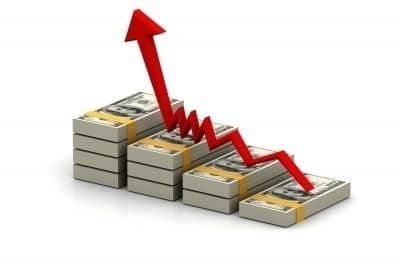Search Results for: mutual fund
Wealth Building Made Easy: Using Low Cost, High Return ETFs

… to learn more. The lesson covers the following points,
How investors can choose low costs or low returns.
Answers to 9 FAQ investors ask about ETFs and mutual funds.
The high cost structure of mutual funds.
Comparable ETFs hold the positions of every mutual fund.
Why ETFs have significantly lower costs than mutual funds.
Successful …
Lower Cost ETFs Can Boost Your Bottom Line Returns

Lower Cost ETFs Can Boost Your Bottom Line Returns for high-cost mutual fund owners who want more portfolio profits. Investors who own high-cost mutual funds can increase their returns by switching to lower cost ETFs. That can happen because ETFs generally have much lower costs for sales and management due to their modern …
Read More3 Big investing choices

… of these products. As a consequence mutual funds offer blanket coverage of the market. Indeed, mutual funds serve every imaginable slice, dice and investing angle. There are funds for every small investor anywhere on Earth!
Many begin investing using mutual funds
Mutual funds are the starting investment for many people. Most mutual funds put most …
ETF Revolution changes investing

… in 1990. In the following decades the idea spread around the investing world. What began as an investing ripple grew into a colossal tidal wave. Exchange Traded Funds emerged and listed on exchanges or trading just like stocks. That makes them distinctly different and more accessible than mutual funds. ETFs are essentially mutual funds created …
Read MoreTake Control of Your Finances, A Step-by-Step Financial Security Guide

… planning?
First, assess your situation. Next, set clear financial plan goals. Then, create a detailed budget to track income and expenses. After that, prioritize building an emergency fund. Finally, focus on paying off high-interest debt.Work through the process with these steps:
1Assess Your Current Financial Situation
2Set financial goals
3Create a budget
4Build …
Control Your Financial Destiny: The Smart Money Management Essentials

… the dated structure of mutual funds and trade like individual stocks on stock exchanges. As a result, the best can double the investment return of high-cost mutual funds. Thousands of ETFs offer a low-cost way to diversify and track indexes and broad or narrow market sectors.
Index Funds: These passively managed funds, typically …
Pyramid Portfolios: Build Wealth and Make Money Work for You

… with risk.
Step 3: Educate Yourself About How Pyramid Portfolios Build Wealth
Understand basic investment concepts by learning about different types of investments, such as stocks, bonds, mutual funds, and ETFs (exchange-traded funds) by reading books, taking online courses, or consulting reputable financial websites to build your knowledge.
Step 4: Choose an Investment Account …
Portfolio Optimization: The Importance of Stock Holding Size

… taking a position or deciding on the size.
4. Impact on Market
Sizeable stock holdings wield considerable influence over market sentiment and stock prices. Institutional investors, funds, and significant shareholders can sway market dynamics with buying or selling decisions. For instance, a substantial purchase or sale by a mutual fund, pension fund, or ETF …
Change Is The Investment Growth Catalyst That Moves Markets

… cost of the now obsolete mutual fund structure.
At a time when horses and sails were the latest in technology, mutual funds were revolutionary. Even today, the mutual fund sale, distribution, management and administration structure show this historic foundation. Nevertheless, so do the high costs associated with mutual funds.
Mutual Funds Have an Outdated Structure …
Media Exposes Financial Advisor Incompetence: How to Protect Your Wealth
… other charges. Those charges split payments to mutual and other funds and financial service provider fees.
Because advisors without fiduciary obligations receive a cut of the annual mutual fund fees, they often recommend them over lower-cost ETFs without those fees. That cost difference comes from investors’ pockets and is why mutual funds produce lower …
